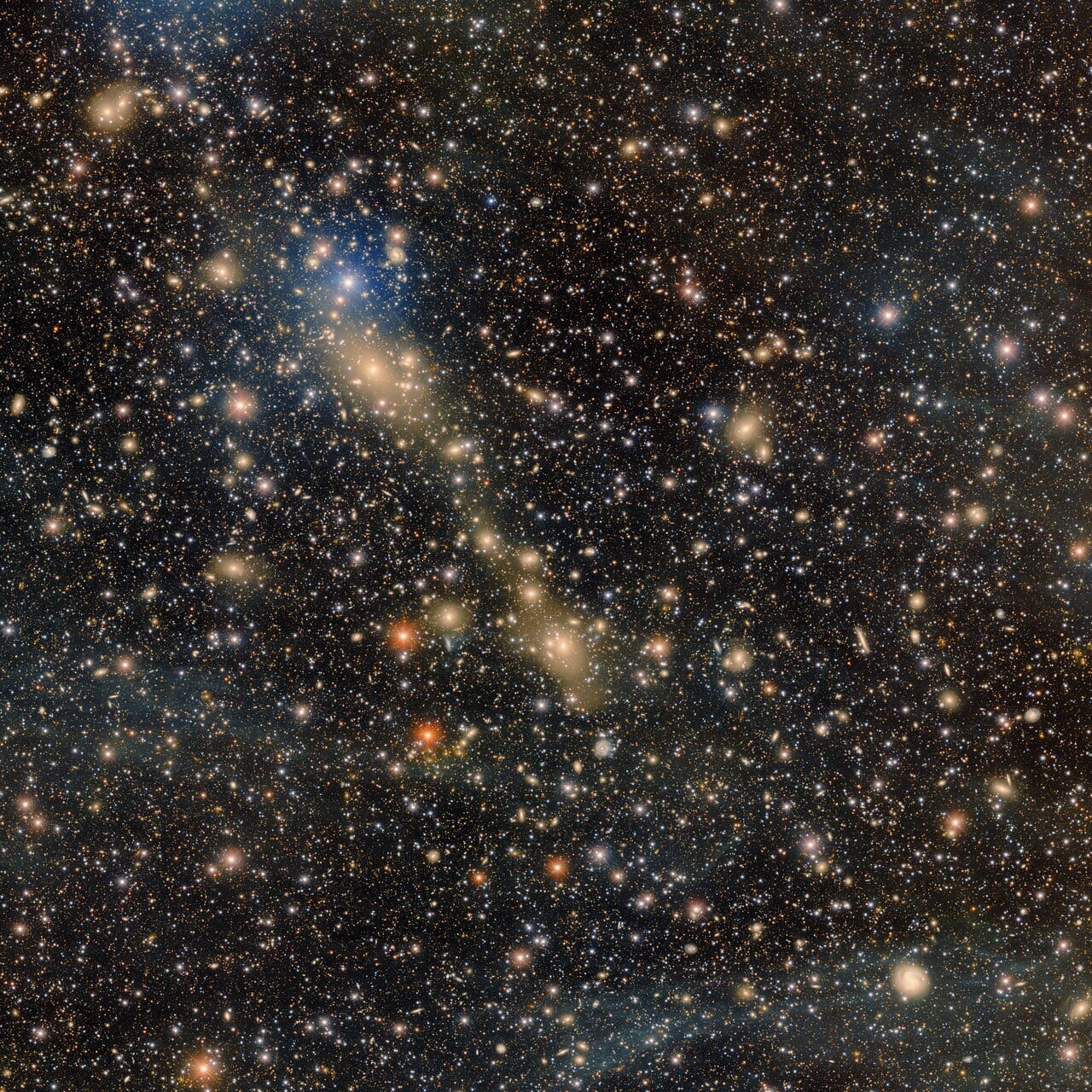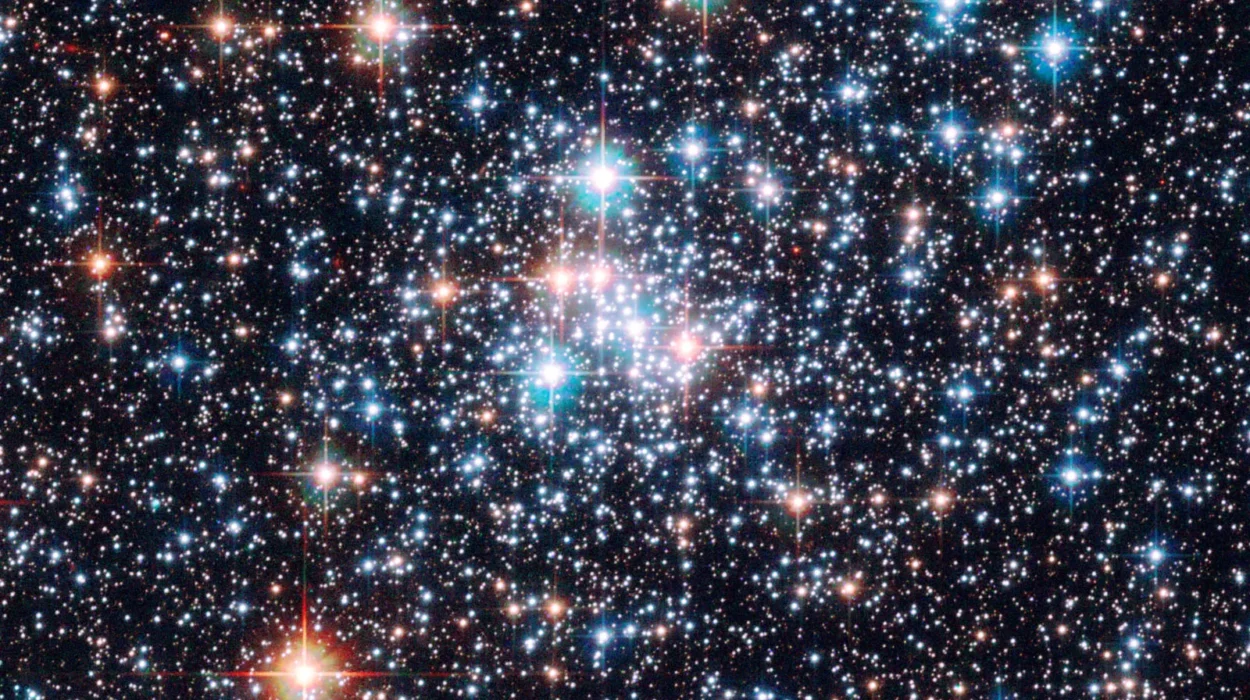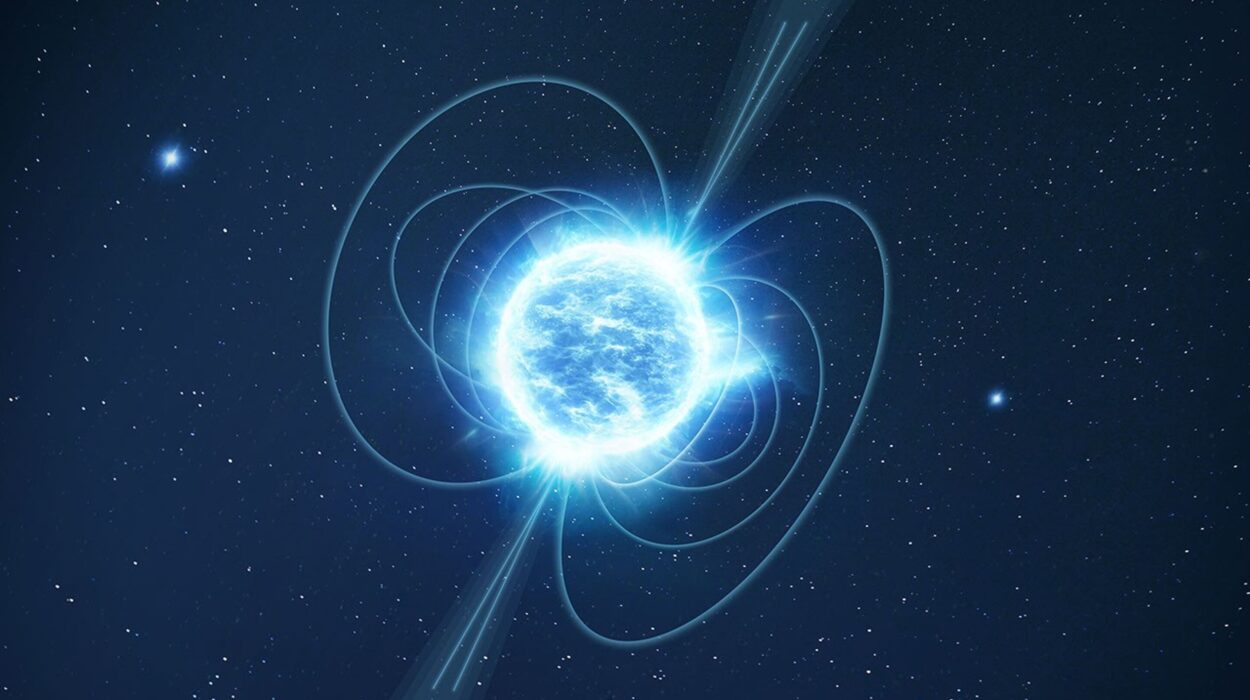In the cosmic silence 700 million light-years from Earth, something hauntingly beautiful glimmers through the darkness—a ghostly glow suspended between galaxies. This ethereal light, barely perceptible even to our most powerful instruments, is known as intracluster light. It is not the light of any single star or galaxy, but the collective whisper of countless orphaned stars—stars torn from their homes and set adrift by the titanic collisions that form galaxy clusters.
Now, thanks to the extraordinary sensitivity of the Dark Energy Camera (DECam)—a 570-megapixel marvel mounted on the Víctor M. Blanco 4-meter Telescope in Chile—astronomers have captured the deepest image ever taken of the galaxy cluster Abell 3667. This image is more than just a portrait of distant galaxies. It is a time capsule, a fossilized imprint of cosmic violence, and a harbinger of the future of astrophysics.
The Battle Inside Abell 3667
Galaxy clusters are the universe’s great cities: sprawling metropolises of hundreds or thousands of galaxies, drawn together by the gravitational pull of dark matter. Abell 3667 is no different. It lies in the southern sky, nearly three-quarters of a billion light-years away, and it is undergoing a dramatic transformation.
At the heart of this image, scientists have detected two smaller galaxy clusters in the process of merging, a process that has taken billions of years and will continue for billions more. What makes this image so remarkable is the golden bridge of intracluster light stretching between these two galactic cores. This bridge is made of stars—stars that were once nestled inside individual galaxies but were flung free by the violent gravitational interactions as their parent clusters began to merge.
This intracluster light is not just visually striking—it is scientifically profound. These glowing tendrils are a record of ancient cosmic collisions, a celestial fingerprint left by titanic forces. By studying the brightness, color, and structure of this light, scientists can reconstruct the history of how galaxy clusters grow, interact, and evolve.
The Invisible Sculptor: Dark Matter’s Gravitational Grip
What causes galaxies to collide and stars to be ripped away? The short answer: dark matter.
Dark matter is the hidden scaffolding of the universe. Though it does not emit, absorb, or reflect light, its gravitational pull shapes everything from galaxies to galaxy clusters. Scientists estimate that more than 80% of the mass in galaxy clusters is made of dark matter—a mysterious substance that interacts only gravitationally with normal matter.
As galaxies fall toward one another within a growing cluster like Abell 3667, dark matter’s pull accelerates them to incredible speeds. When they finally pass close to one another or crash head-on, the stars inside are sometimes flung into intergalactic space. These scattered stars, no longer bound to any one galaxy, become the source of intracluster light.
Studying where intracluster light appears—and how it behaves—gives researchers clues about the distribution of dark matter. Like tracking leaves blowing in the wind, observing these stars allows astronomers to “see” the unseen currents of gravity that dark matter produces.
Cirrus from the Milky Way: Ghosts in the Foreground
While most of the glowing sources in the DECam image are galaxies billions of light-years away, some of the faint structures in the image actually lie within our own galaxy. Floating through the foreground are wispy, bluish filaments known as Milky Way cirrus, or integrated flux nebulae.
These delicate clouds of interstellar dust are illuminated by the combined light of stars from the Milky Way. They drift quietly between us and the distant universe, visible only in long-exposure images. In the DECam capture of Abell 3667, they appear as gossamer strands crossing the image—a cosmic veil between us and the depths beyond.
Though they might seem like distractions, these cirrus are a reminder of the complexity of astrophysical imaging. To study the universe in its most ancient form, astronomers must separate the light of the present from the light of the past, distinguishing our own galactic dust from intergalactic starlight that has traveled for hundreds of millions of years.
An Image 28 Hours in the Making
To reveal the secrets of Abell 3667, astronomers stitched together images captured over 28 hours of exposure time. That’s over a day’s worth of peering into the abyss, collecting faint photons that have traveled through the vacuum of space for nearly a billion years.
Why such a long exposure? Intracluster light is exceptionally faint—often less than 1% the brightness of the night sky. To capture it requires a combination of large mirrors, sensitive detectors, and immense patience. Only a few facilities on Earth are capable of this kind of deep-sky imaging, and DECam is among the very best.
Constructed for the Dark Energy Survey, DECam was designed to study the mysterious force causing the expansion of the universe to accelerate. But in the process, it has become an unparalleled tool for capturing deep, wide-field images of the cosmos. The Abell 3667 image is one of its most stunning achievements.
The Dawn of a New Era: The Vera C. Rubin Observatory
If DECam has opened a window into intracluster light, the Vera C. Rubin Observatory is about to tear that window wide open.
Currently in its final stages of construction in Chile, the Rubin Observatory will soon begin the Legacy Survey of Space and Time (LSST)—a ten-year campaign to image the entire southern sky every few nights. With the largest digital camera ever built—3.2 gigapixels—Rubin will generate an unprecedented deluge of cosmic data.
Every image taken by Rubin will be sharp enough to detect intracluster light like that in Abell 3667. But more importantly, Rubin’s frequent and repeated imaging will allow scientists to stack images—combining hundreds or even thousands of exposures to reveal the faintest features of the universe.
By year eight of its mission, Rubin will produce galaxy cluster images as deep as the DECam image of Abell 3667, but across the entire sky. Instead of studying one cluster in detail, astronomers will be able to study millions. With that data, they will map how clusters form, how dark matter sculpts the cosmos, and how stars behave when flung into the void.
Stellar Fossils and the History of Everything
What makes the discovery of intracluster light so powerful is not just its visual poetry—it’s the story it tells. These are stellar fossils, traces of violent interactions that happened before Earth was even born. Every shimmering strand is a relic from an era when galaxies were torn apart, reassembled, and forged into something larger.
This cosmic archaeology allows scientists to trace the genealogy of galaxy clusters, and by extension, the structure of the universe itself. Intracluster light gives us a way to look back in time, to reconstruct the evolutionary tree of cosmic architecture.
And this is just the beginning.
With Rubin’s forthcoming flood of data, astrophysicists expect to uncover new phenomena: never-before-seen bridges of stars, massive structures of dark matter inferred from their lightless gravitational echoes, and even rare cases where intracluster stars host their own planetary systems—tiny islands of life adrift in intergalactic seas.
A Sky Full of Ghosts and Promises
In a universe that often feels cold and indifferent, images like the one of Abell 3667 remind us of something deeply moving: even in the spaces between galaxies, there is light.
Not the bright light of stars or the blazing cores of quasars, but the soft glow of wandering souls—stellar castaways who carry the memory of ancient cataclysms. They shine faintly, almost invisibly, yet together they tell the story of how structure arises from chaos, how galaxies grow from destruction, and how the cosmos evolves.
This faint light, once hidden, is now being revealed—not just by advanced technology, but by our insatiable human desire to know where we come from, and where the universe is going.
As the Rubin Observatory prepares to scan the heavens with unmatched clarity, we stand at the edge of a new era in cosmology. One where every faint glow is a clue, every image a revelation, and every silent star drifting between galaxies a storyteller in a cosmic drama still unfolding.
More information: Anthony Englert et al, The Intracluster Light of Abell 3667: Unveiling an Optical Bridge in LSST Precursor Data, arXiv (2025). DOI: 10.48550/arxiv.2505.23551






